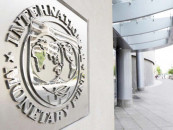Palwasha Bashir: No crown for courting
Being a female badminton player in a cricket-loving nation is a tough call.

Being a female badminto. n player in a cricket-loving nation is a tough call. PHOTOS: ARIF SOOMRO
Since cricket remains the most ardently played and followed sport in Pakistan, the women players representing the nation on the pitch have been awarded central contracts and fared far better than players like Bashir, who opted for lesser-known sports like badminton. The bleak prospects, however, have not dampened her zest of winning against all odds. “I have not been overwhelmed with the tough circumstances,” says Bashir. “There is no way that I am going to throw in the towel before achieving something substantial at least at the regional and Asian level.”

Being a female badminto. n player in a cricket-loving nation is a tough call. PHOTOS: ARIF SOOMRO
As Bashir trains for a top-ranked badminton tournament alongside her coach Iftikhar Hussain for three hours in the sweltering Karachi heat, he can’t help but applaud the young woman’s determination and potential. But the fact remains that Palwasha — bronze medal winner in the South Asian Federation (SAF) games in 2010 — hasn’t featured in a major event outside the country for three years now.
“Palwasha is a good player who can trouble the best in the business,” says Hussain who was a renowned doubles player himself in the 1990s. “But then how can I be sure of her talent? She hasn’t been exposed to competition from her Asian peers for a long time now which is nothing less than a tragedy for someone of her talent.”
He adds that along with international exposure, the overall standard of the game within the country was also plummeting. “Not long ago we were a potent force in the region and regularly used to topple India. Forget India, we can’t even win against Sri Lanka and Bangladesh any more,” he says.
Palwasha’s story is similar to that of many female sports stars in the country. The patriarchal setup in the country not only discourages women from taking up sports but even those like Bashir, who break free of stereotypes, have to put up a constant struggle for recognition and resources.

Being a female badminto. n player in a cricket-loving nation is a tough call. PHOTOS: ARIF SOOMRO
Sara Mohmand, another top-ranked female player, who recently moved to Melbourne, also shares similar concerns. “The Australian national team is getting exposure all over the world, there are top class academies and the players might not be getting great money but they are playing all over,” says Mohmand who is currently being trained by Ong Ben Teong, a former world number two, along with her spouse who is also a leading national player. “On the contrary there is no such concept in Pakistan where players have no such facility available to them.”
Moreover, Mohmand complains that female players in the country always play in the shadows of their male counterparts. They are given poor cash prizes and there is still a gender disparity in the sport. Bashir is of the same opinion. “Badminton is becoming increasingly competitive and increasingly expensive,” she says. The cost of the equipment often exceeds the prize money which makes it tough for girls who don’t have sponsorship to play the sport at the top-level. For example, the prize money for the recent championship in Lahore was Rs10,000 which is equivalent to the price of a good quality racket.

Being a female badminto. n player in a cricket-loving nation is a tough call. PHOTOS: ARIF SOOMRO
Bashir’s financial concerns have eased up slightly after landing a permanent job with the National Bank of Pakistan. Even though the salary is meager, the support from her family compensates for it. “As a kid, my brothers encouraged me to play cricket on the street. Soon I was playing street badminton too and around the age of 13, I realised I am in it for the long haul.” She also credits her department for their consistent support but admits that much more needs to be done.
Across the border, the Indian Badminton Federation has been pumping in money into the sport after successfully initiating a premier league along the lines of the cash-rich Indian Premier League. Bashir craves for the opportunity to play in such a league. “It goes without saying that I want to feature in the league. In fact most of the national players want to be tested against the best, not to mention that the league is also financially rewarding,” she says. “Like top sportsmen from around the world, we also need that sort of recognition and money to continue the pursuit of our professional goals.”
For Bashir and her fellow shuttlers in the country, the real cause for concern is the galling behaviour of the sporting authorities who have failed to settle the dispute between the Pakistan Sports Board (PSB) and Pakistan Olympic Association (POA). The two bodies have been at loggerheads for nearly two years now, each claiming to be the parent body of sports in the country. Their rift has also seen a mushrooming of parallel bodies in almost all sporting federations, and badminton is no exception. While one of the governing bodies works under PSB, the other one operates under POA and the chaos has resulted in a three-year international ban for Pakistan.

Being a female badminto. n player in a cricket-loving nation is a tough call. PHOTOS: ARIF SOOMRO
In this tug of war between governing bodies, the professional players in the country have paid the biggest price. “At the end of the day an ordinary player suffers the most. Both organisations claim that they have the requisite mandate but of course it is tough to convince the international bodies,” explains Bashir.
A sane approach that fosters growth in sports rather than dividing players and resources in camps is the need of the hour. Unless that happens, the only stories in the country’s sports history would be of those who never made it to the finish line due to circumstances beyond their control.
Emmad Hameed is the sports in-charge at The Express Tribune. He tweets @Emmad81
Published in The Express Tribune, Sunday Magazine, June 15th, 2014.



















COMMENTS
Comments are moderated and generally will be posted if they are on-topic and not abusive.
For more information, please see our Comments FAQ